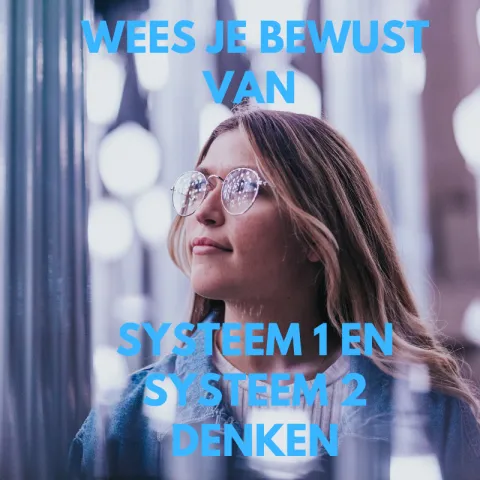
Did you know that we, as humans, have two “ways of thinking”? Namely: system 1 and system 2 thinking. A professional trickster of our brain – an illusionist – made me aware that I shouldn't believe everything I see with my own eyes.
The Israeli psychologist Daniel Kahneman is a key pioneer at the intersection of economics and psychology. In his publications, he rejects the idea of the rational, calculating human who always acts in their own self-interest. His bestselling book ‘Thinking, Fast and Slow’ from 2011 summarizes decades of research. It teaches us a great deal about human behavior in an economic context. In the book, Kahneman also introduces two ways of thinking: system 1 and system 2. How often do you trust your eyes? Even at work? What exactly are system 1 and system 2 thinking, and why should we be aware of them? System 1 thinking is fast, instinctive, and emotional. System 2 thinking, on the other hand, is slower, more deliberate, and logical.
System 1 Thinking
With system 1 thinking, we can do things like: locate the source of a certain sound, solve the sum 2 + 2 = ?, drive a car on an empty road, and understand simple sentences.
System 2 Thinking
With system 2 thinking, we can: focus our attention on someone during a noisy party, dig into our memory to recognize a certain sound, give someone our phone number, or solve the sum 17 x 24 = ?. Often, we are tricked by others – either consciously or unconsciously. They take advantage of our system 1 thinking: our fast, instinctive, and emotional way of thinking, in which our brain often tries to fill in the missing pieces. This often works well, but sometimes it doesn’t.
Viktor Mids
One of those people who professionally tricks us is the well-known illusionist Viktor Mids. Recently, I attended a major technology conference where Viktor lifted the veil on how he sometimes “deceives” our brain. He showed us, for example, a photo of a large cargo plane surrounded by people. Then he showed us a new photo – which looked exactly the same to me – and asked what was missing. No one in the room saw it. Then he placed the two photos side by side, and it turned out that we had all missed the large airplane engine under the wing. It was missing in the second photo. Then he gave us a little test. He asked the audience to solve three simple math problems – which he said out loud – in our heads. Then he asked us to think of a tool. And then to give that tool a certain color. When he asked for answers, it turned out that 90% of the audience had thought of a red hammer! He explained to the amazed crowd that he had simply used basic statistics and something he called “priming.” During the test, for example, he had mentioned the word “hammer” and the word “red” a few times. Our brains had unconsciously picked this up and made sure that we collectively pictured a red hammer.
Eiffel Tower
Finally, he showed us a photo of the Eiffel Tower. The image had strange colors, like a kind of negative. He asked us to stare at the cross in the middle of the photo for a while. Then he showed us the same image but in “normal” colors. The grass was green, the sky blue… at least for a few seconds. Because when I blinked, I saw the Eiffel Tower in black and white. It had always been black and white! Somehow, thanks to the previously shown negative image, our brains had filled in the “correct” colors for us. Try it yourself! [embed]https://youtu.be/PIX2fd9ZtT0[/embed] Source: YouTube channel MINDF*CK – Viktor Mids Raymond te Veldhuis CheckData & DataJobs.nl

